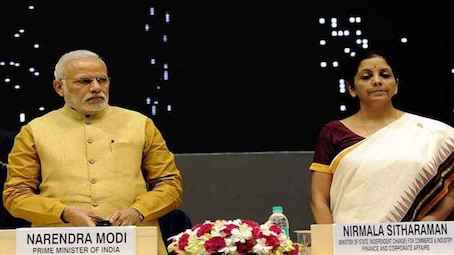When Finance minister Nirmala Sitharaman presented the budget for 2021-22 on Monday, many Indians thought that the budget would ramp up allocation across the board- that the FM will simply double and treble allocations and try to solve all the problems.
In reality, the exact opposite happened.
Sitharaman’s budget will rank as the politically boldest budget of the Narendra Modi government since 2014. She has achieved the remarkable feat of demonstrating the resolve to push second-generation reforms, fund growth and capital formation through debt without additional resource generation from higher taxation while remaining on a defined, credible fiscal glide path. The budget is not only bold but also offers a direction for growth with strong intent for reforms.
Neither any new schemes creating permanent entitlements are initiated nor are there any cuts or concessions for income tax-payers. Rather, it does what the economy requires at the moment— the transition from consumption growth to investment growth.
She initiated something that her previous finance minister shied away from doing for too long— privatization of Public Sector Banks (PSBs) and of Public sector undertakings (PSUs)
The proposals for large-scale asset monetization (railways, National Highways Authority of India, pipelines, land) and increase in FDI limit in the insurance sector from 49 percent to 79 percent are revolutionary.
Another critical announcement for the banking sector is the creation of an asset reconstruction-asset management company announced in the Budget by the FM. This entity, called a ‘bad bank’, will give a big reprieve to NPA-ridden banks by absorbing the toxic assets and freeing them to pursue fresh lending. The bad bank idea has been supported by senior bankers and other financial sector experts citing that the idea will help for quicker bad asset resolution.
The recovery through debt recovery tribunals and the Insolvency and bankruptcy code (IBC) mechanism has been limited to only a few large cases. A bad bank could help in better bad loan resolution.
The reforms are significant as it shows the Narendra Modi government is facilitating more private sector participation in the key sector.
Of course, several of these moves will come under strident scrutiny of opposition parties, and, given the current level of trust deficit, the government will do well to form an institutional mechanism to transparently execute the asset monetization program.
But if all these proposals materialize, it would amount to reforms of the kind that were seen during the time of the first NDA government of Atal Bihari Vajpayee. The Modi government, it seems, has taken a calculated political risk in pushing this economic agenda keeping in view the fact that the next general election is more than three years away.
While PM Modi along with his finance team is ready to reform the key sector with the privatization agenda, the only challenge for the government will be the effective execution of all these reforms because neither the government nor the country can afford the luxury to fail at any cost!


